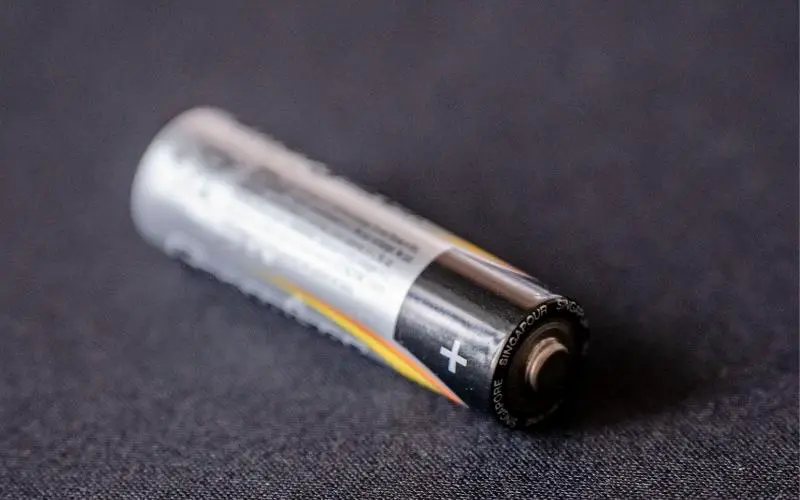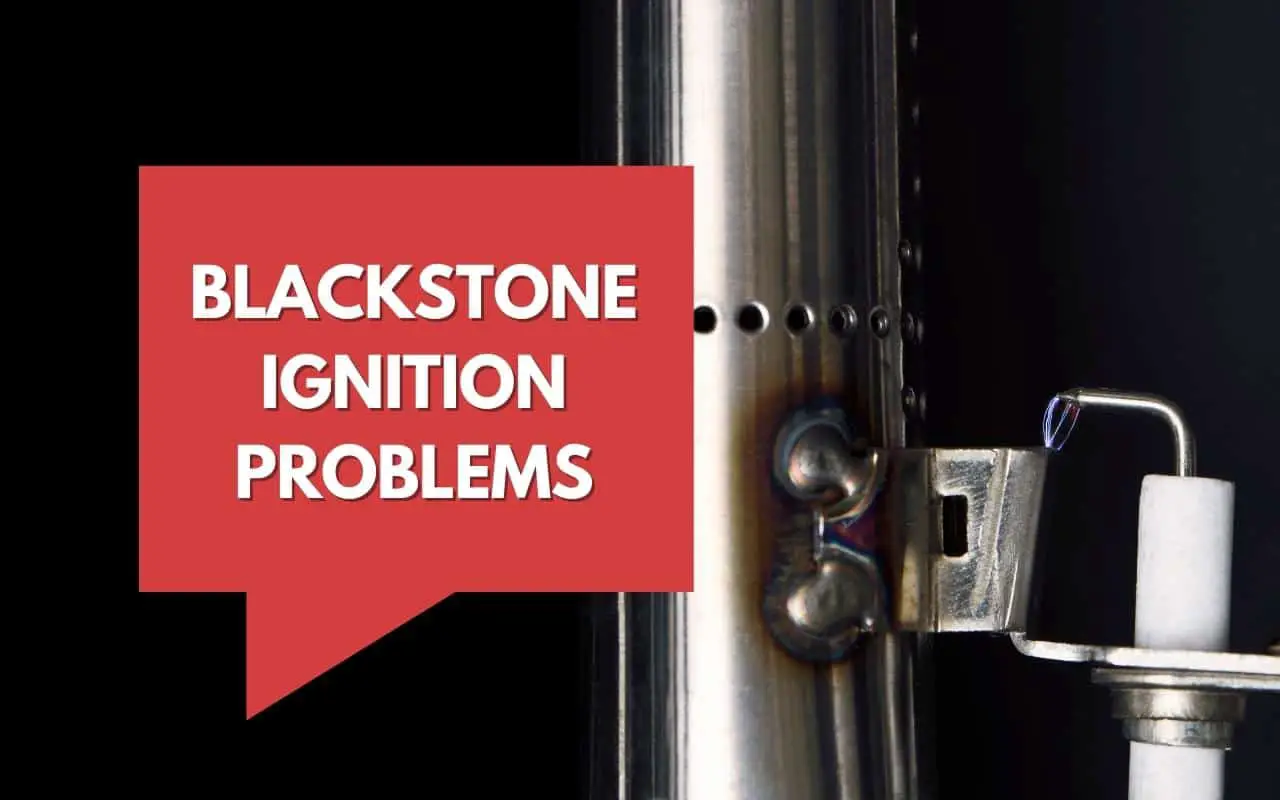Blackstone griddles are a popular choice for outdoor cooking enthusiasts. They offer a large cooking surface, even heat distribution, and easy cleanup. They might not be as loved as traditional grills yet, but they’re gaining a huge following among those who love to cook outdoors.
However, even the best products can have their issues. And one of the problems one may encounter with Blackstone griddles is that they sometimes won’t light. This can be frustrating, especially if you’re trying to get a quick meal on the table.
There are a few common reasons why a Blackstone griddle might not ignite. Most of them are easily solved and you will be grilling again in no time.
Table of Contents
- What to Do First When Your Blackstone Griddle Refuses to Ignite?
- Gas Flow Issues
- Igniter Battery Issues
- Igniter Issues
- Conclusion
- FAQ
What to Do First When Your Blackstone Griddle Refuses to Ignite?
So you wanted to have nice grilled steak for dinner but your Blackstone griddle won’t light. No worries, this is not the end of the world and you will most likely solve the problem within minutes.
But before you start trying to fix the issue, you should first determine whether the problem is related directly to the igniter or not.
The quickest and easiest way to eliminate half of the possible problems is by igniting the burner manually.
Turn the burner control knob to low or medium and using a long match stick or a long lighter, try to ignite the burner. If the burner lights up and the flames are nice and even, then you know that the problem is with the igniter and not with the gas flow.
Doing this first will save you some time and you may in fact start griddling immediately, leaving the ignition troubleshooting to another day. You know the drill, never do today what you can put off for tomorrow :-)
Jokes aside, match lighting the burners is simply the best solution when the guests are about to arrive. No one probably wants to see you messing around with the griddle trying to fix the igniter.
Anyway, now that we have looked at how to make the troubleshooting easier, let’s have a look at some of the most common problems that you may encounter.
Gas Flow Issues
No gas, no flame, easy as that. Well, troubleshooting gas flow problems isn’t always a simple task. If you think you might have a gas flow issue, the first thing you should do is check all your connections.
Empty gas cylinder
You’d be surprised how often people run out of gas without realizing it. Without propane, there’s nothing for the igniter to ignite.
How to fix: If you think this might be the problem, then the solution is simple – replace your gas cylinder with a full one or have your old one refilled.
Pressure regulator issues
The pressure regulator is another very common culprit when it comes to gas flow problems. There’s a flow-limiting device that’s part of the pressure regulator. If that device gets tripped in error or malfunctions, it can restrict the gas flow and prevent your Blackstone griddle from igniting.
How to fix: The simplest fix you can try is to reset the pressure regulator. To do that, turn off the gas flow at the gas cylinder, set all control knobs to off, and disconnect the regulator. Wait for a few minutes. Then re-attach the regulator and SLOWLY turn the gas back on at the cylinder. Now you can try to ignite the burner again. If this doesn’t work, you might need to replace the pressure regulator altogether.
Here’s a video guide on how to do that – https://www.youtube.com/watch?v=Er0sOanacDs
TIP: Note that the flow-limiting device might get tripped when there are gas leaks as well, so if the griddle still has gas flow problems after the reset, check for gas leaks.
Gas leaks
If there’s not enough propane reaching the burner tubes even on the high setting, then you may struggle to ignite the gas. If that’s something you’re experiencing, you may want to check for gas leaks. The most common places to find them are around the hose connections and at the regulator but they can occur on the gas cylinder as well.
How to fix: A good way to check for gas leaks is to use a mixture of dish soap and water. Apply it to the suspected areas and then turn on the gas. If there’s a leak, you’ll see bubbles forming.
If you do find a gas leak, make sure to turn off the gas and don’t try to use the griddle until the issue has been fixed.
Clogged-up burner tubes
If the burner tubes are clogged, the gas won’t be able to flow through them properly and you may have a hard time lighting the griddle. It’s usually not a problem with newly bought griddles. Clogged-up burners are often found with older griddles that have been sitting idly for months or years or with those that didn’t receive proper cleanup and maintenance.
How to fix: Rust, dust, and bugs are the main culprits when it comes to clogged-up burner tubes. If you think this might be the problem, take a look at the burners and clean them with a bottle cleaning brush if necessary. The burner holes can be cleaned with a stiff piece of wire.
Igniter Battery Issues
Some but not all Blackstone griddles are equipped with a battery-powered ignition system. This mechanism uses a battery to create a spark that then ignites the gas flowing from the burner tubes.

The battery is one of the most common reasons why the griddle won’t light.
Missing battery
Yeah, it may feel somewhat embarrassing when you find out that the reason your griddle won’t light is that the battery is missing. But fear not, it has happened to the best of us. This happens fairly often because there’s no battery included in the package. Yes, it’s mentioned in the owner’s manual but who reads manuals, right?
How to fix: The good news is that it’s an easy fix. Just insert a new AA battery in the igniter’s battery compartment and try igniting the griddle again.
Wrongly inserted battery
So you did insert the battery and the igniter still won’t produce a spark. This is often because the battery is wrongly inserted. Check the battery compartment and make sure that the positive and negative poles are as they should be. The positive side should be facing out.
How to fix: Remove the battery from the battery socket in the igniter and place it back in the other way round.
Dead battery
If the battery is correctly inserted and the igniter still doesn’t produce a spark, it may be time to replace the battery. Remember, you need an AA-sized battery for the igniter. This is easily the most commonly used battery type in the world, so you should have no problems finding a replacement.
How to fix: Buy a new battery and replace the old one :-)
Igniter Issues
Several problems may affect the igniter itself. One of the most common ones is a wrongly placed igniter needle.
Misaligned ignition needle
This is an incredibly common culprit behind a non-working ignition. The ignition needle is the part of the igniter that almost comes into contact with the burner tube. “Almost” is an important word here. The L-shaped needle should be very close to the burner tube but it should not be touching it.
The way the ignition works is that when you press the ignition button or turn the control knob on the piezo-electric-equipped griddle, an electric current runs through the needle. This creates a spark that jumps between the tip of the needle and the burner tube igniting the gas in the process.
When the needle is placed too far away from the tube, there will be no spark and no ignition as a result. Similarly, if the needle is touching the burner tube, the current will just run through to the burner tube and create no spark either. Therefore, the correct position of the needle is essential for proper ignition.
How to fix: You can adjust the needle by bending it with your fingers. Do this with the gas disconnected from the griddle to avoid any accidents. The recommended distance is about 1/4 inch and the tip of the needle should be above one of the holes found on the burner tube. You can test the alignment by pressing the igniter button (or rotating the control knob on the griddles without the push-button ignition). Once you press the button you should hear a clicking sound and a blue spark that arks between the needle tip and the burner tube.
Here’s a video guide:
Tip: Depending on the model, there may be more needles present, often or two for each burner tube. Make sure to check and adjust all of them.
Faulty igniter or wires
Things don’t always last forever and the igniter is no exception. Even with proper care, it may eventually fail. The most common sign of a faulty igniter is that no spark is produced no matter what you do.
On some models, wires lead from the igniter to the ignition needle, and these may also become damaged or disconnected. If they are disconnected from the igniter box, simply reconnect them. However, if the wires are damaged, you will need to replace them.
How to fix: Luckily both the wires and the igniter can be easily replaced. Blackstone carries a full line of replacement parts so you should contact them first before looking for third-party replacements on Amazon or eBay. There’s a good video guide by Blackstone that will help you replace the igniter.
Conclusion
There you have it, those are the most common reasons why your Blackstone griddle may fail to light. In most cases, the problem is easily solved without the need to call in a professional. Just follow the tips and guides above and you should have your griddle up and running again in no time.
And remember, keeping spare AA batteries at hand is always a good idea!
Happy griddling!
FAQ
Do all Blackstone griddles require a battery for the ignitor?
No, not all of them. The battery is only needed for the models with the battery-powered ignition system. The models that don’t have the push-button igniter don’t need any battery to operate.
What size battery goes in a Blackstone igniter?
The igniter runs on a single AA battery. You have to unscrew the ignitor button and insert the battery into the built-in socket with the positive pole facing out. The battery will last a pretty long time as the igniter is only used when starting up the griddle or re-lighting it after turning it off.


